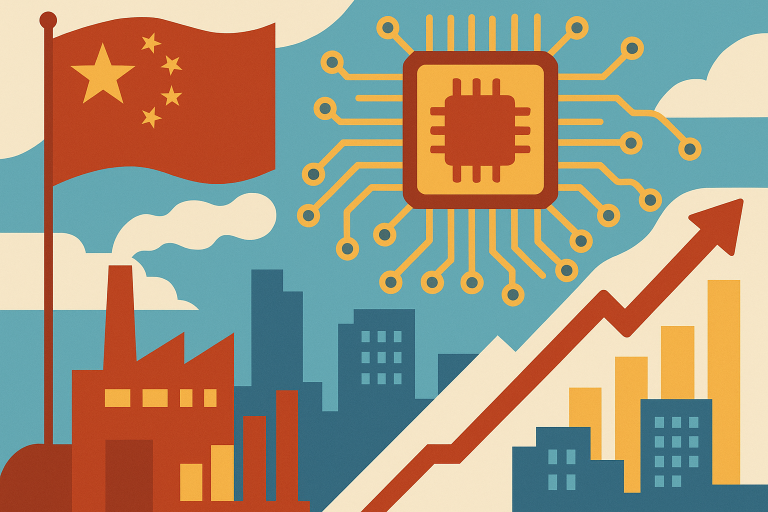China has outlined a new five-year strategy to strengthen technological self-reliance and boost domestic demand, signalling a shift in its long-term economic focus amid rising global tensions and slowing growth.
As per a Bloomberg report, the Communist Party’s Central Committee concluded its four-day meeting on Thursday, with a communiqué pledging to “greatly increase” the country’s capacity for self-sufficiency in science and technology.
The plan also emphasised developing advanced industries such as semiconductors and artificial intelligence, while reducing reliance on foreign technology and external markets.
Beijing’s renewed push for technological independence
Bloomberg notes that the Central Committee’s statement underscored China’s intention to build a “modern industrial system” between 2026 and 2030, placing science and innovation at the heart of its next phase of development.
The state broadcaster CCTV reported that the leadership wants to “strengthen innovation in core technologies,” reflecting Beijing’s growing urgency to overcome export restrictions on advanced chips and high-end equipment imposed by the US and its allies.
This direction aligns with President Xi Jinping’s long-standing vision of “new-quality productive forces” — a phrase referring to high-tech sectors like AI, green energy, and biotechnology that Beijing views as essential for sustaining future growth.
The push comes as the country faces an ageing population and diminishing returns from traditional growth drivers such as property and infrastructure investment.
Expanding domestic demand and investment
Beyond technological independence, the communiqué, states Bloomberg, also highlighted China’s goal of stimulating its domestic economy.
It pledged to “firmly eliminate clogs hindering the building of a unified national market” and to expand both consumption and private investment.
Economists have long argued that increasing household spending and domestic demand is key to rebalancing China’s growth model, which has historically relied on exports and heavy industry.
The leadership’s renewed focus on internal demand suggests an attempt to stabilise growth amid weaker global trade and persistent deflationary pressures.
Analysts expect further policy announcements in the coming months that may include incentives for consumption, investment in green technology, and infrastructure upgrades.
Response to global and structural challenges
The plan’s timing reflects growing global uncertainty and heightened technological competition.
Western export controls have restricted China’s access to advanced chip-making tools and software, prompting the government to accelerate its efforts to develop domestic alternatives.
At the same time, the leadership is attempting to maintain investor confidence as the property market continues to struggle and youth unemployment remains high.
The five-year plan’s focus on “high-quality development” also signals a shift away from rapid GDP expansion towards sustainable, innovation-driven growth.
By investing in emerging sectors such as AI and renewable energy, China aims to reduce vulnerability to external shocks while positioning itself as a global leader in next-generation industries.
Market reaction
Following the release of the communiqué, China’s financial markets remained largely stable. The FTSE China A50 Futures held steady, while the yuan and the yield on 10-year government bonds were little changed.
Analysts noted that while the details of the policy framework are still limited, the emphasis on self-reliance and domestic demand suggests a more inward-focused growth strategy in the years ahead.
The full policy blueprint for the 15th Five-Year Plan is expected to be finalised and released in 2026.
It will likely include more specific targets for industrial innovation, consumption, and sustainability — priorities that are increasingly shaping Beijing’s response to both domestic and international pressures.
The post China’s five-year plan focuses on tech self-reliance and domestic growth appeared first on Invezz

